Earlier this month I visited the
Swedish Air Force Museum
near Linköping, on the site where Carl Cederström (Sweden's first
aviator, like so many early flyers a member of the landed gentry with
an interest in machinery and little to do) established the first
Swedish flying school. Lots of images follow:
cc-by-sa on
everything.
The whole museum is quite dark, which is why some of these photos will
be a bit blurred. (Yes, all done with the PowerShot 1300.)


Thulin G, a primary trainer aircraft. Albatros-Flugzeugwerke GmbH was
showing off its new Albatros B.IIa on a tour of northern Europe in
1914, but the landing gear and propeller were damaged on arrival in
Sweden. Parts couldn't be obtained before the outbreak of war, and the
aircraft was interned and copied as the Thulin G. (This particular one
was built by Flygkompaniets Verkstäder Malmen.)
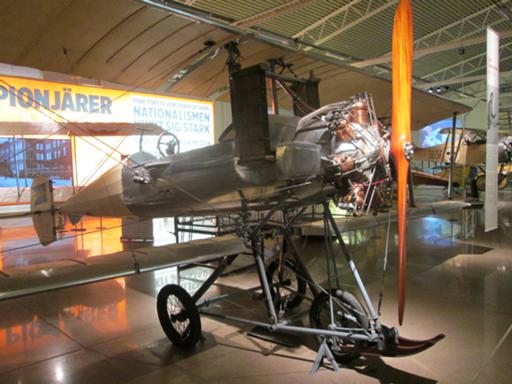
Breguet Type IV, trainer.
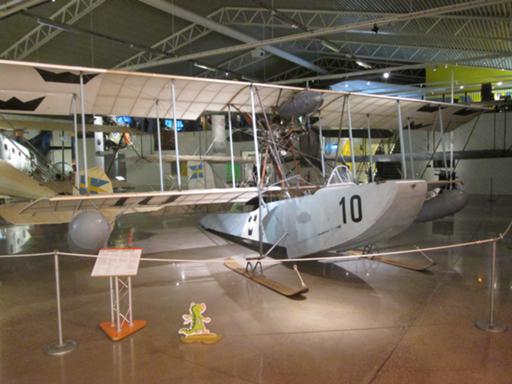
Donnet-Lévêque L II flying-boat, used at Cederström's flying school.
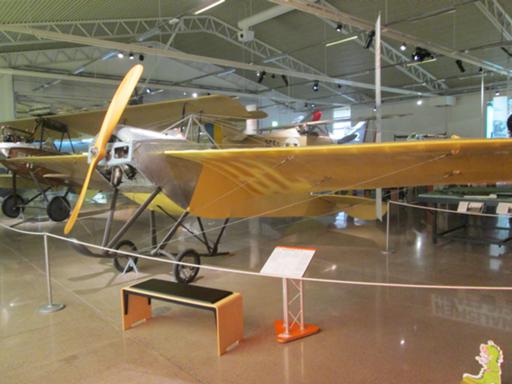
Nieuport IV.G (M 1 in Swedish service), early monoplane fighter.

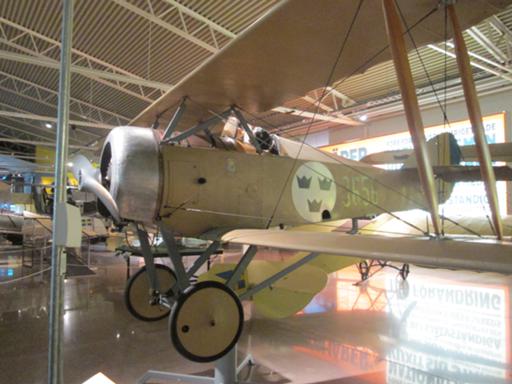
Another FVM aircraft, the Ö1 Tummelisa, used as an advanced trainer.
Lots of torque from the engine, but apparently delightful to fly apart
from that.
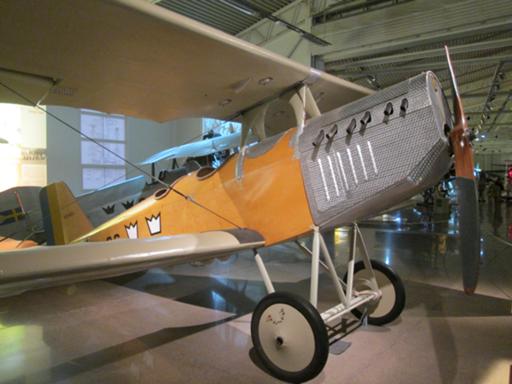
Heinkel HD 35. Obtained on approval, inadequate as a trainer, but the
Swedes held onto it anyway.

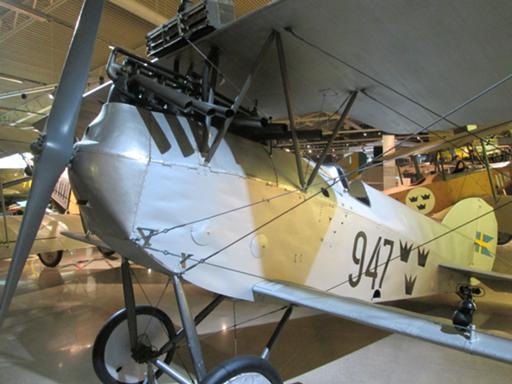
Phönix C.I, an Austro-Hungarian reconnaissance plane. Dagens Nyheter
and the Swedish Aeronautical Society invited the Austrian aviators
Edmund Sparmann and Max Perini to Sweden after the War; they brought
this plane and flew rings round the local machines, and licence
building was immediately arranged.
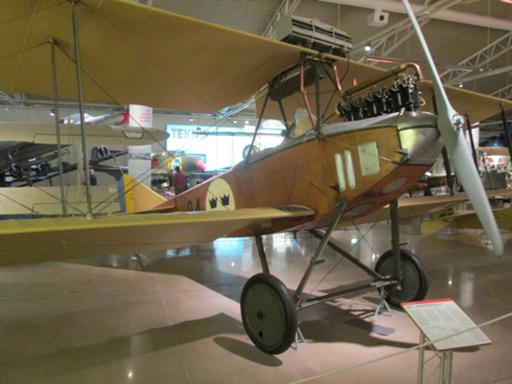
Another Albatros, a B.II model.


Fokker C.V-E, intended as a fighter but used as a liaison aircraft.
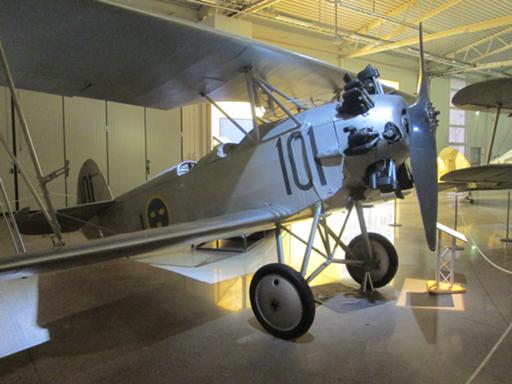

Raab-Katzenstein RK-26 Tigerschwalbe, a relatively unsuccessful
trainer (of the 25 delivered, 18 were destroyed in accidents) probably
because after modification it was 200kg heavier than Gerhard
Fieseler's original design.
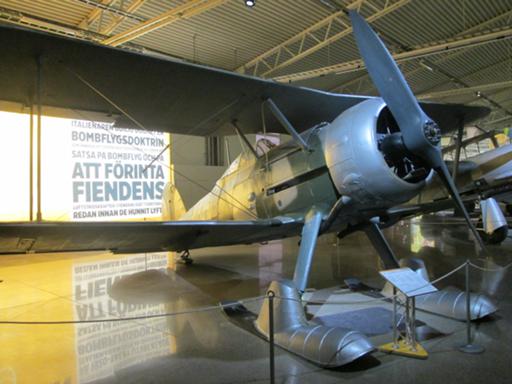

A Gloster Gladiator, of course, and probably the only one in that
particular livery; it was used by Swedish Volunteers fighting in the
Talvisota and Jatkosota (Winter War and Continuation War).
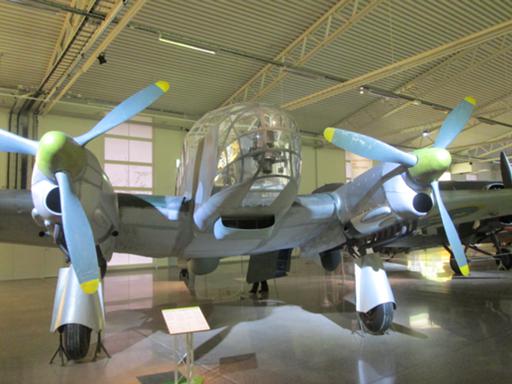

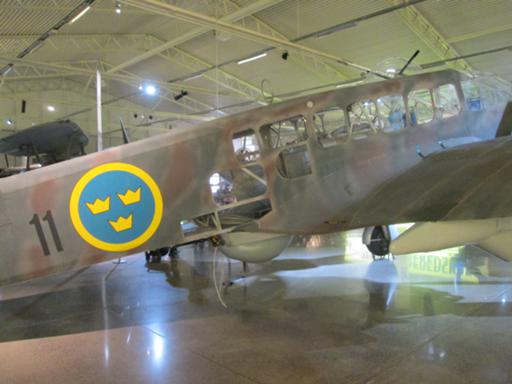
Caproni Ca.313 reconnaissance bomber (bought largely because the start
of the Second World War meant that the USA was no longer selling
aircraft to Sweden). Had a very bad reputation, particularly for
engine fires and fuel leaks.
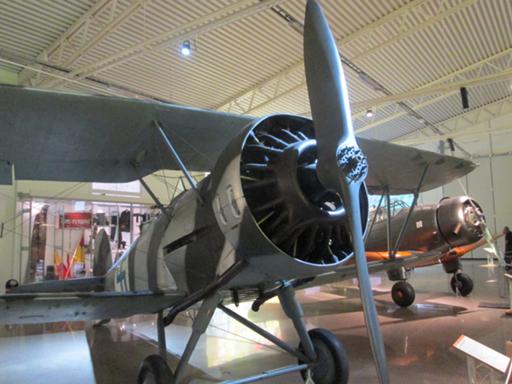


A Hawker Hart, light day bomber, again in Swedish Volunteer colours.
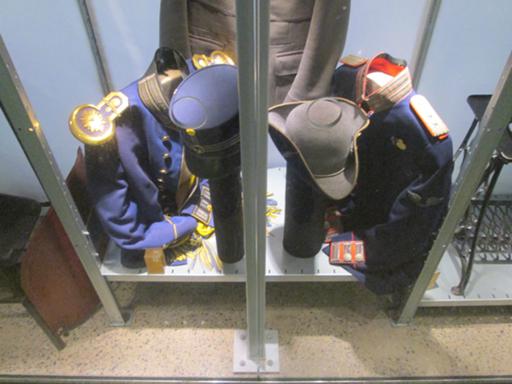
Various uniforms of the late 1930s.

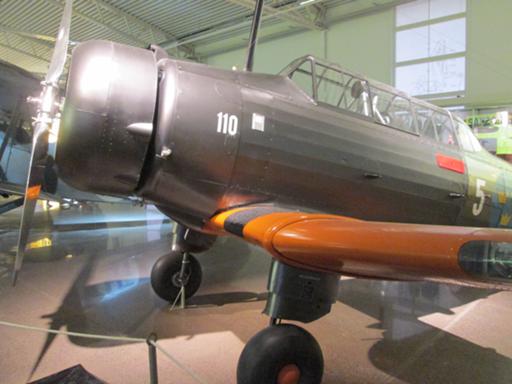
North American NA-16 trainer (hacked together from an ex-RAAF CAC
Wirraway with parts from an ex-RCAF NA-64 Yale).

Seversky P-35, replaced the Gladiator as a defensive fighter in the
summer of 1940.
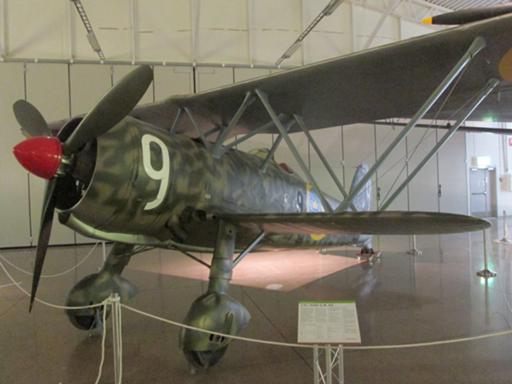

Fiat CR.42, as with the Caproni bomber bought as an emergency measure.
Nearly half of the Swedish CR.42s were lost to accidents, many blamed
on poor material quality at the Fiat factory. Slow, poorly armed, and
an open cockpit is not ideal when flying in Scandinavia.

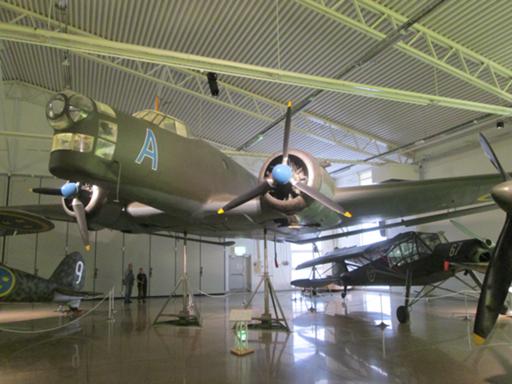

Junkers Ju 86K, the only surviving Ju 86 in any condition. (And the
Fieseler Storch behind it.)
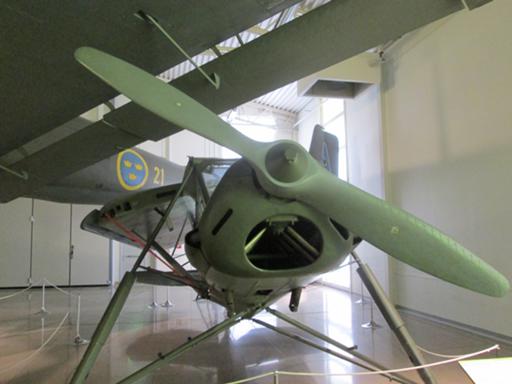
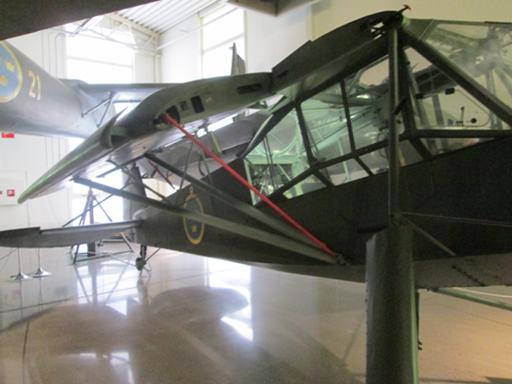
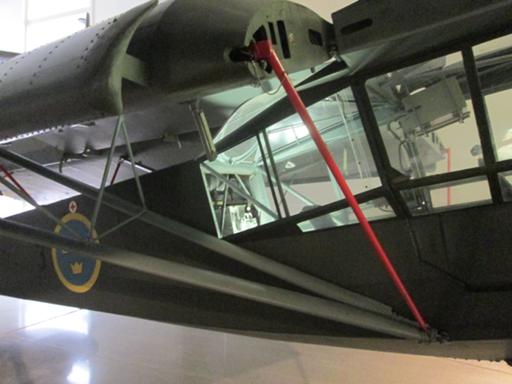
Fieseler Storch, in reasonably good condition though certainly not
flyable.
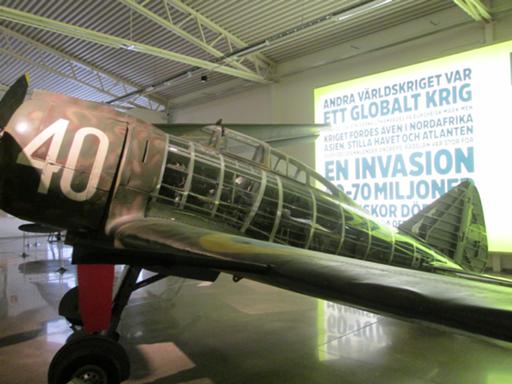
Not what you might expect, but a Reggine Re.2000 (or most of one
anyway), another emergency purchase. Performance in harsh conditions
was good, but reliability was very poor.
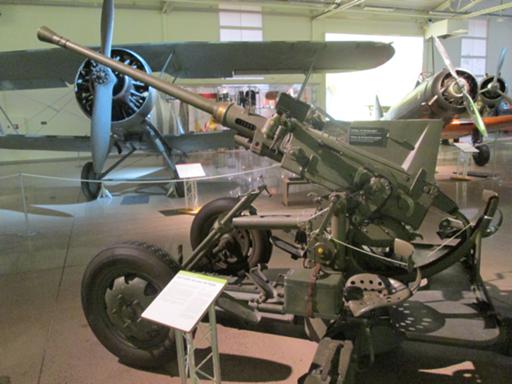
One thing Sweden didn't need to import was anti-aircraft guns, such
as this original model Bofors 40mm.
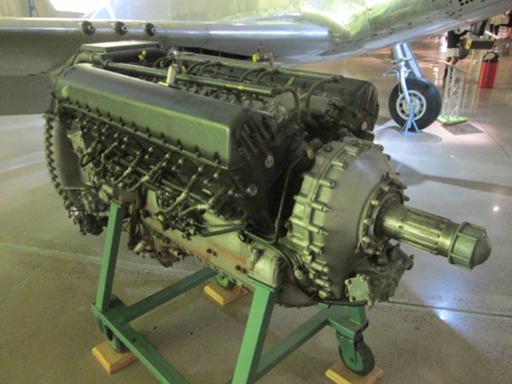
A V-12 aero engine; I think this is a locally-built equivalent to the
Merlin or the Packard V-1650.
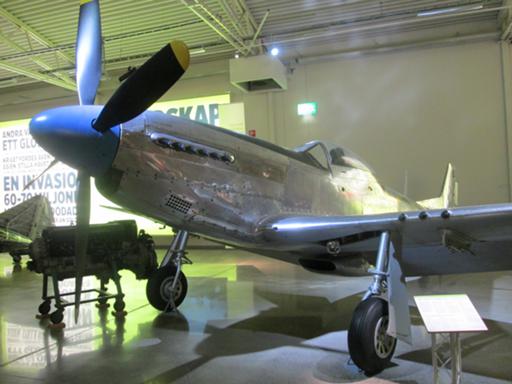
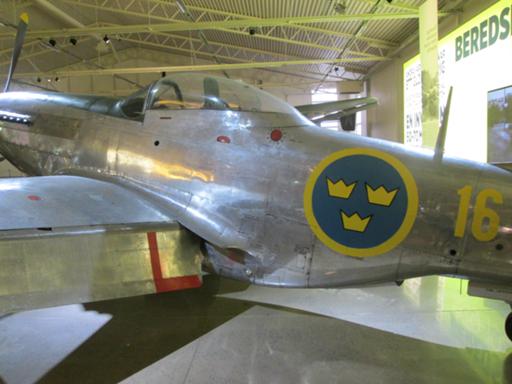
North American P-51D Mustang. The first four Mustangs in Swedish
service had diverted there during the war; afterwards they bought lots
more, but retired them by the early 1950s.
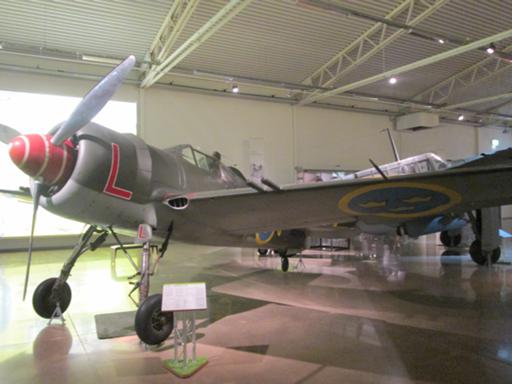
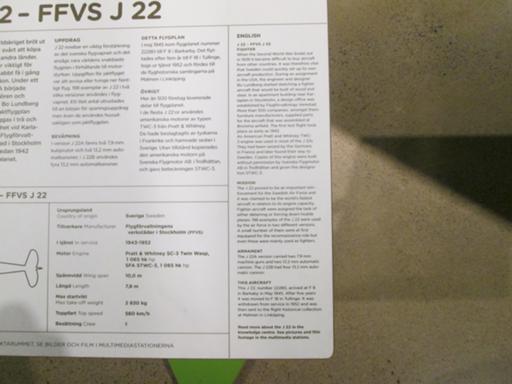
FFVS J 22, an emergency wartime wood-and-metal design. I particularly
like the apologetic text about the engine.

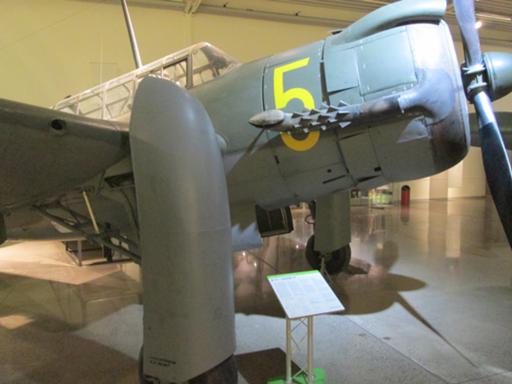
Saab 17, a medium bomber and reconnaissance aircraft. Note cooling
vanes on engine exhaust, and cowling for landing gear (the main gear
retracts backwards to lie along the lower surface of the wing).
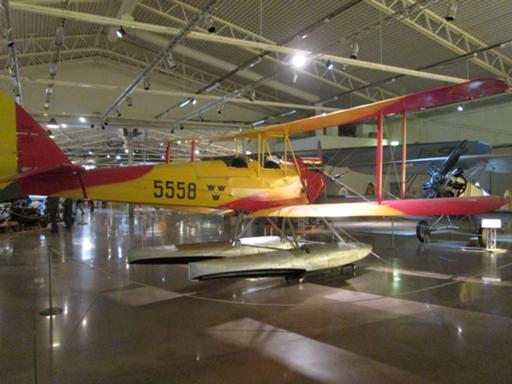
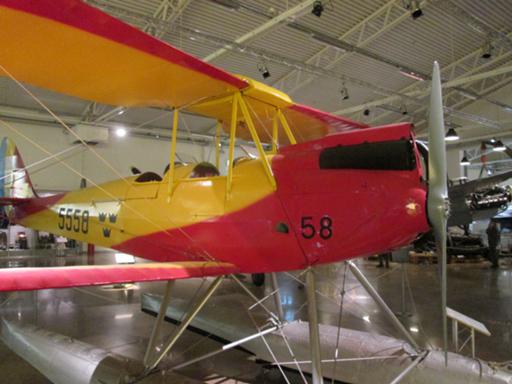
I've seen a few of these, but never in a colour scheme like this. A de
Havilland Moth 60T trainer.
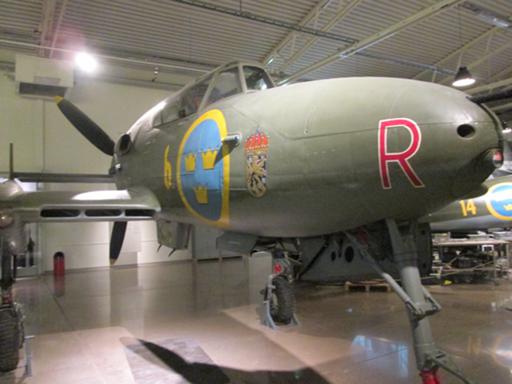

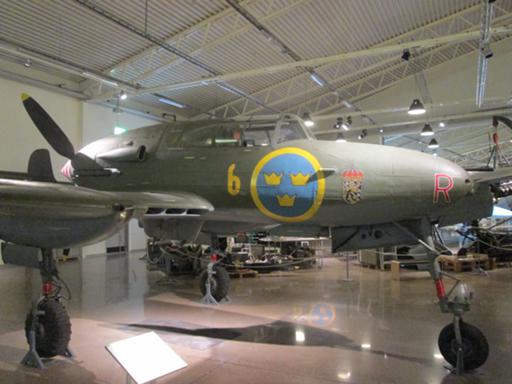
A Saab 21, a post-war fighter and ground attack design; unusually, it
uses a pusher propeller (for a better forward view, and the ability to
concentrate guns in the nose), but consequent difficulties in bailing
out meant it was fitted with an ejection seat relatively early.

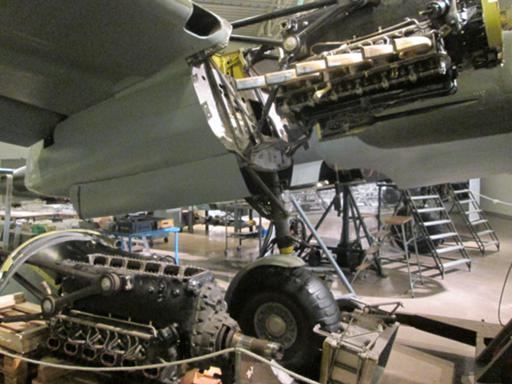

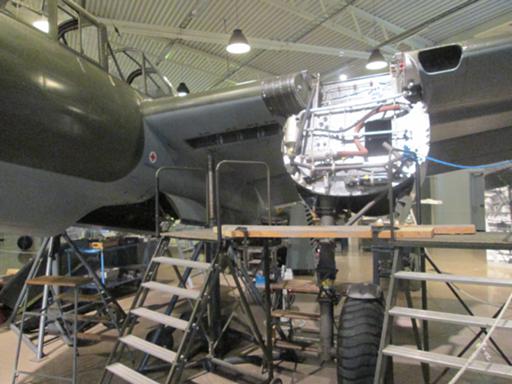
Saab 18: built during the war as a dive bomber, some converted into
torpedo bombers, with a bad reputation for crew safety that led the
last models to have ejection seats fitted. It was used in trials of
early Swedish air-to-air missiles, and replaced by the Lansen in
1958-1959.
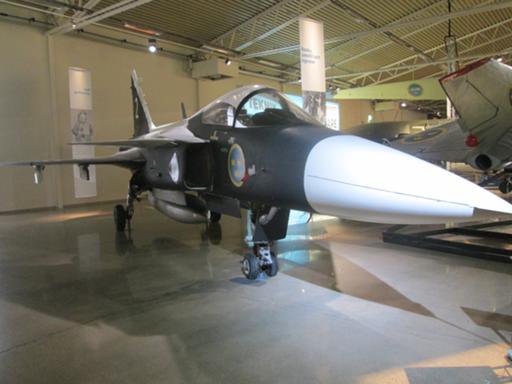
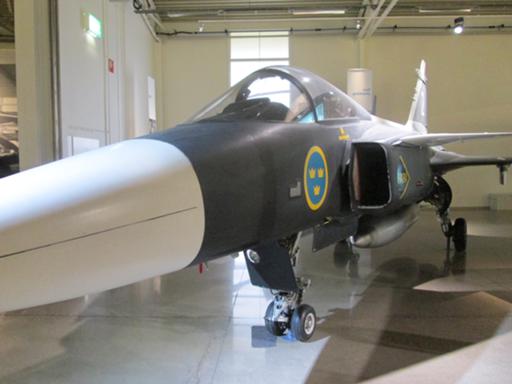
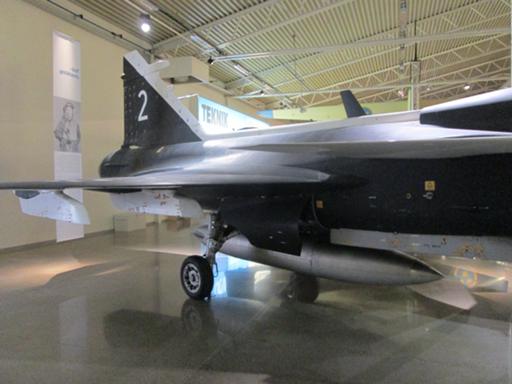
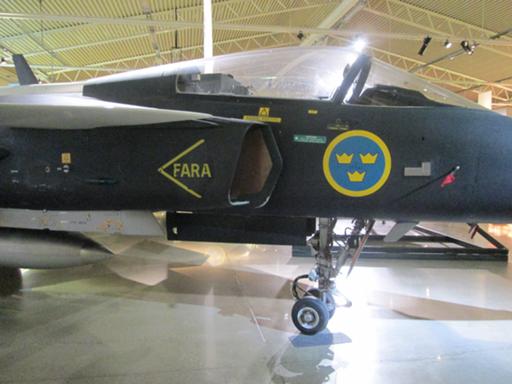
And all of a sudden: the JAS 39 Gripen. All right, it's not really
clear what it's doing in this hall, but never mind.

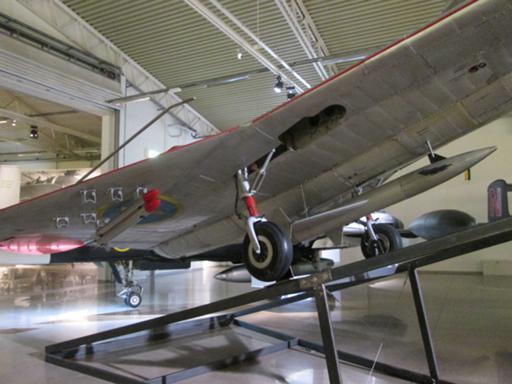

The Saab 210 "Lilldraken", a 70% scale model of the Draken built as a
proof of concept for the delta wing.
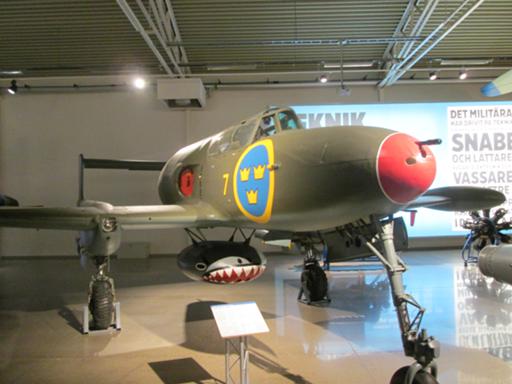
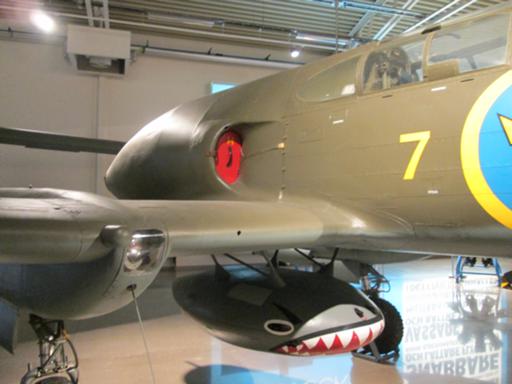

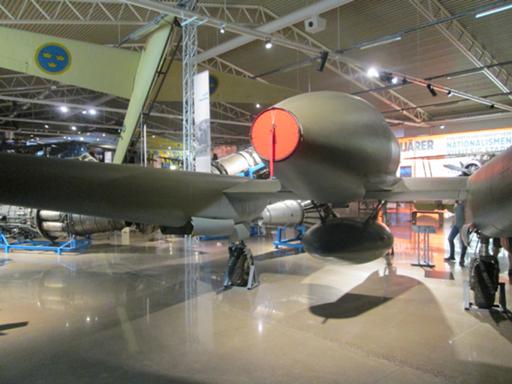
Saab 21R, a 21 design modified for a de Havilland Goblin jet engine.
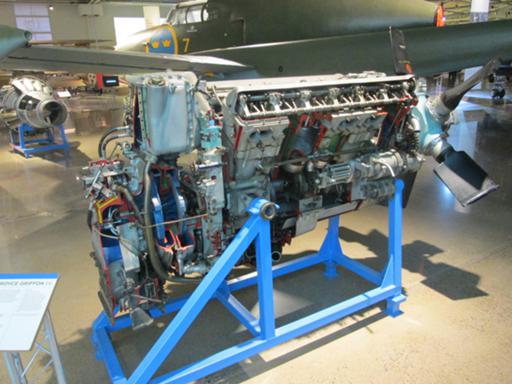
Griffon 66.
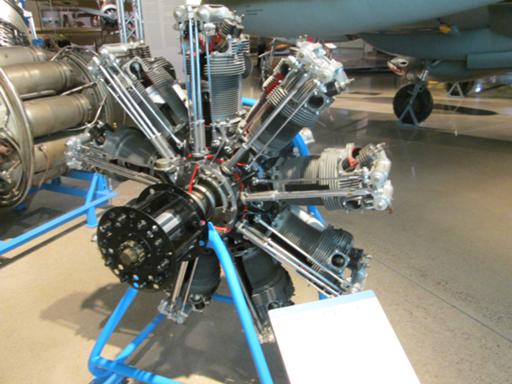
Bristol Jupiter.
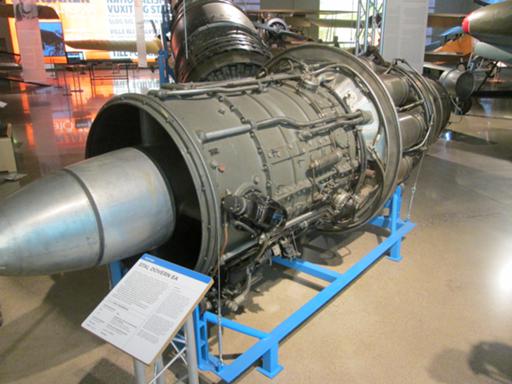
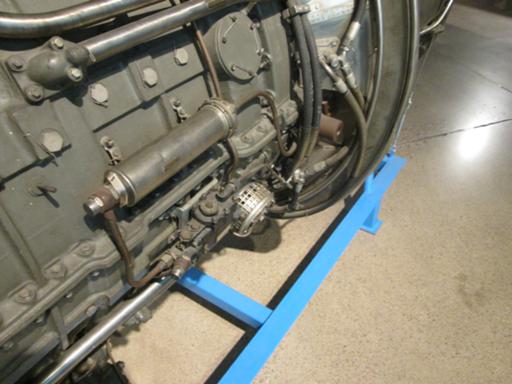
STAL Dovern, one of the first home-designed Swedish engines.
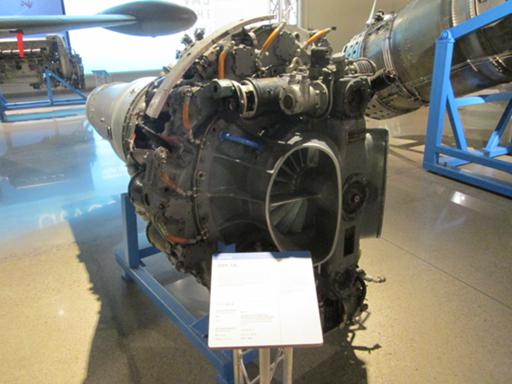

RM 1A, the licence-built Goblin 2 used in the Saab 21R.
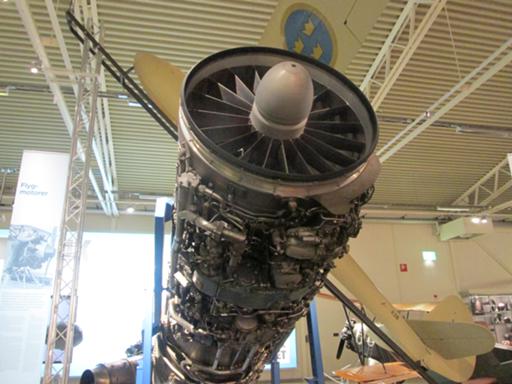
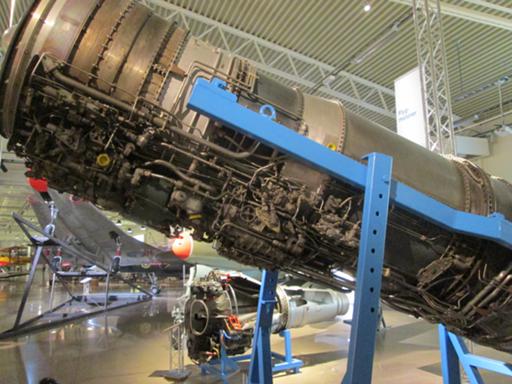
RM 8 afterburning jet engine, built for the Saab 37 Viggen.
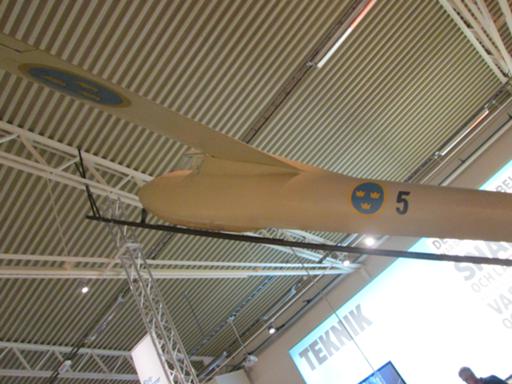
DFS Weihe A-3 glider.
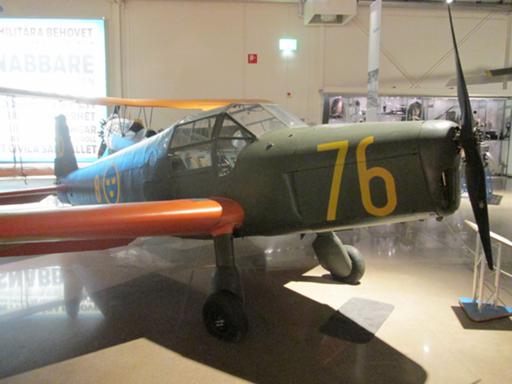
The distinctive shape of a Bücker Bestmann, used for training and
courier duties.
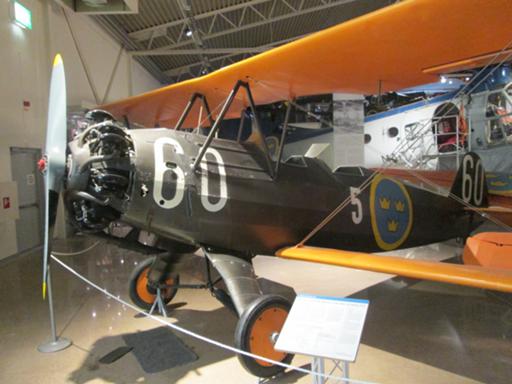

Focke-Wulf Fw 44, trainer.

Thulinmotor TYP A, nine-cylinder air-cooled radial engine based on a
Le Rhône 9C.
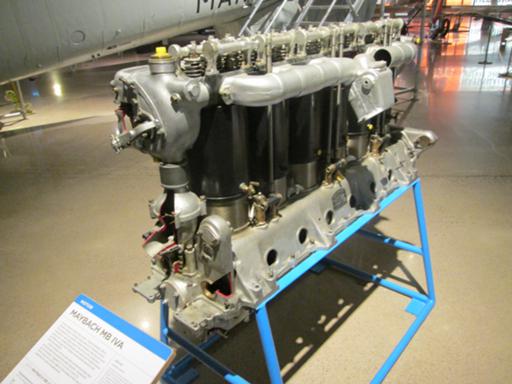
Maybach Mb IVA, a high-altitude engine for zeppelins and fixed-wing
aircraft.

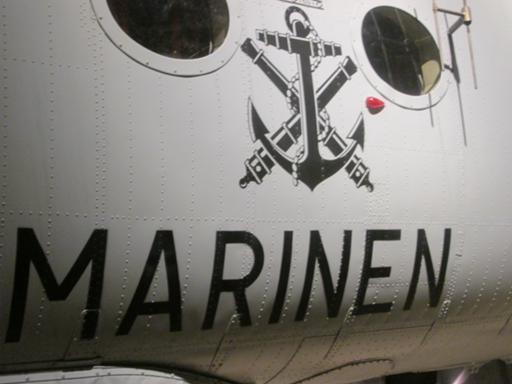

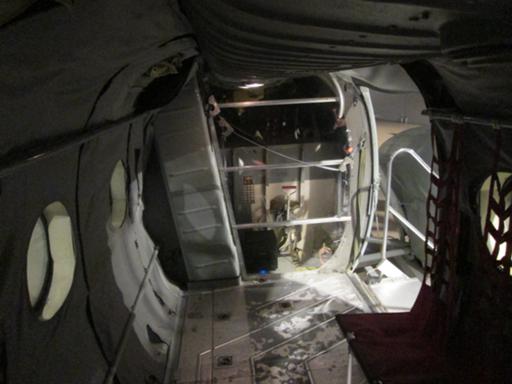
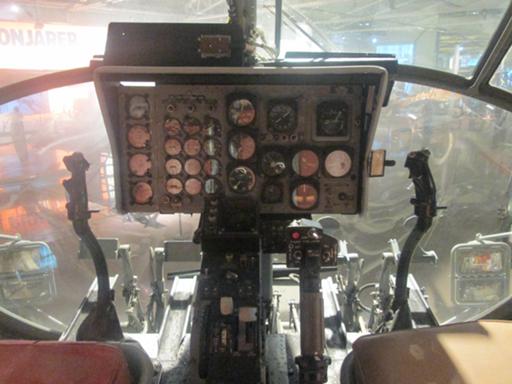
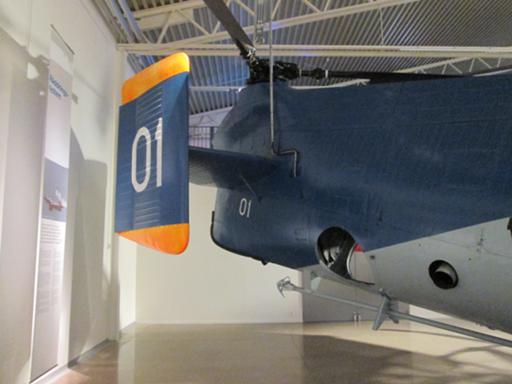
Vertol 44A, an upgraded Piasecki H-21, transport and anti-submarine
helicopter.
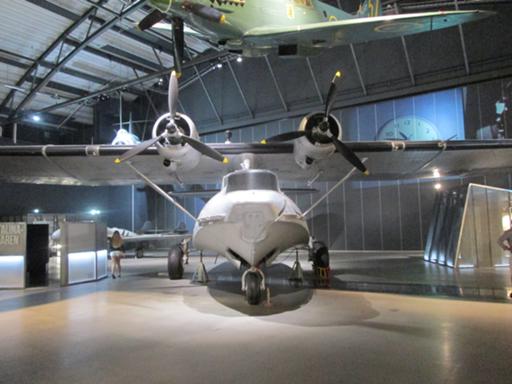
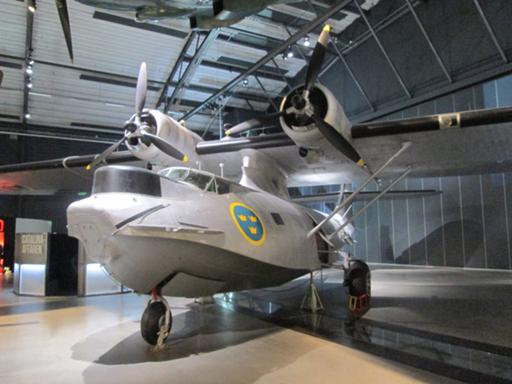
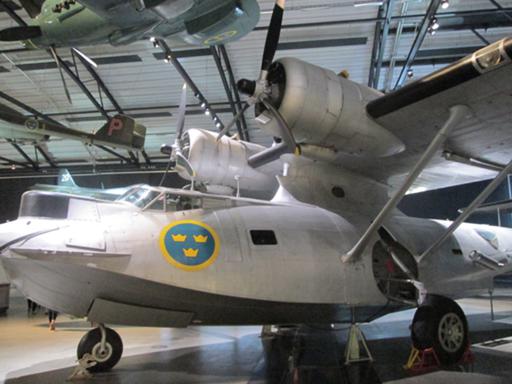
Into the Cold War, and the
Catalina Affair in
which a DC-3 derivative and a Catalina were shot down over
international waters by Soviet fighters.
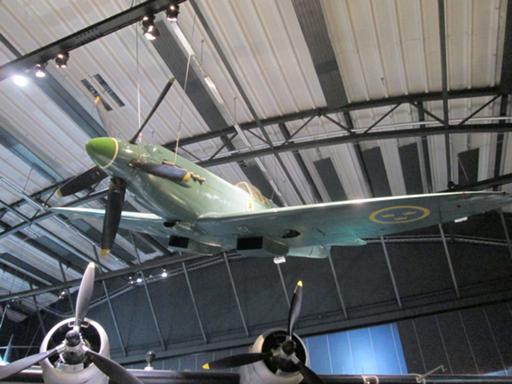
Photo reconnaissance Spitfire (PR.XIX), sold to Sweden after the war.

de Havilland Vampire.
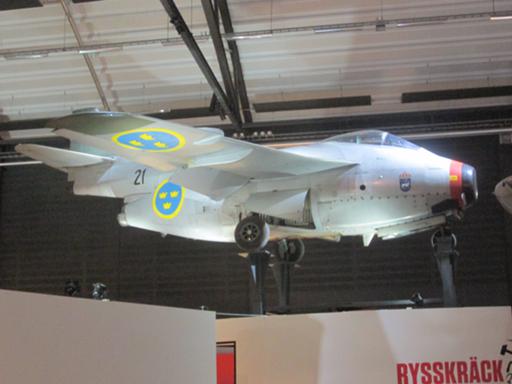
Saab 29 ("Flygande Tunnan"), the second Swedish turbojet-powered
aircraft after the 21R. In service from 1950 to the mid 1970s, it was
surprisingly agile, and popular with its crews (once training was
worked out; transition from two-seater Vampire trainers was less than
ideal).
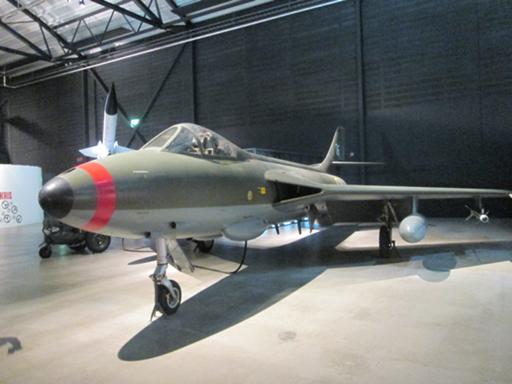
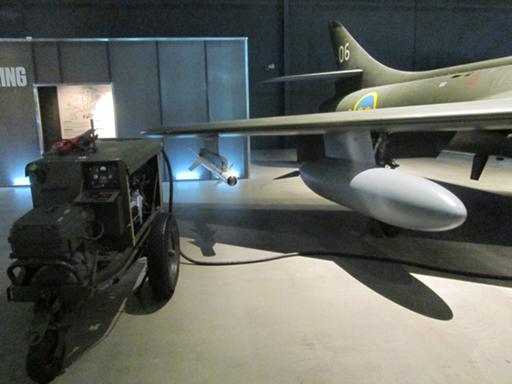
Hawker Hunter with its starting cart. Used for air defence, and
aerobatic display, in the late 1950s and early 1960s.
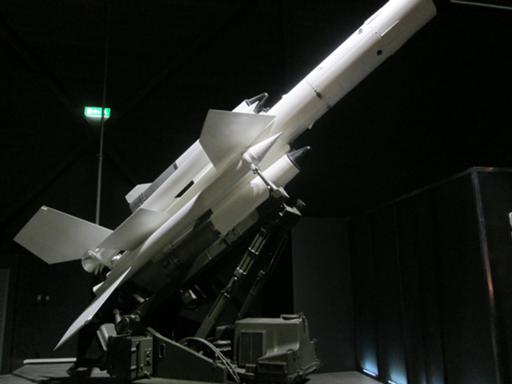
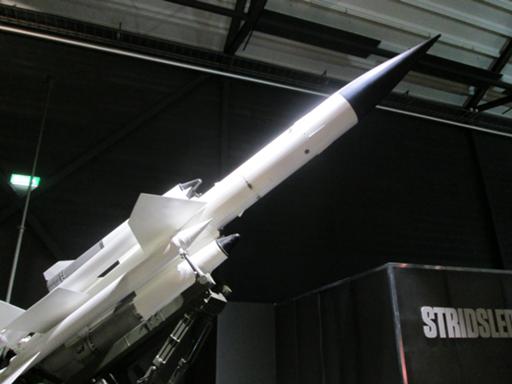
Bristol Bloodhound SAM (Mk II).
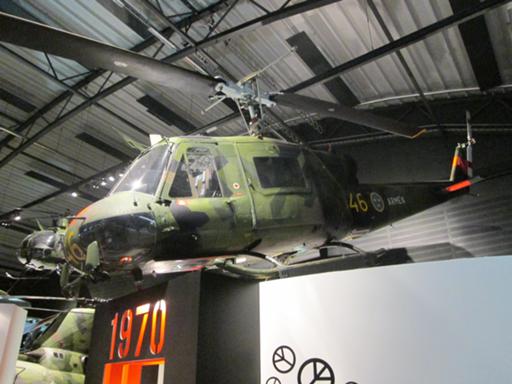
Not a Huey, technically, but an Agusta Bell 204.

Boeing Vertol 107.
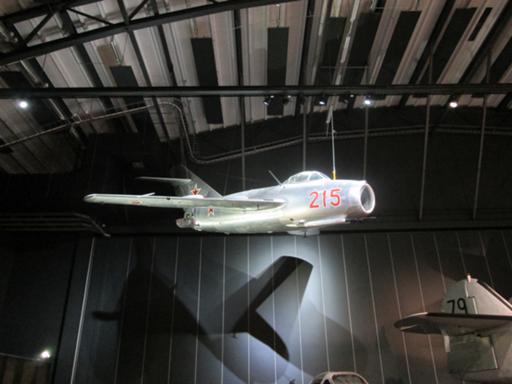
MiG-15, as part of the Catalina Affair display.
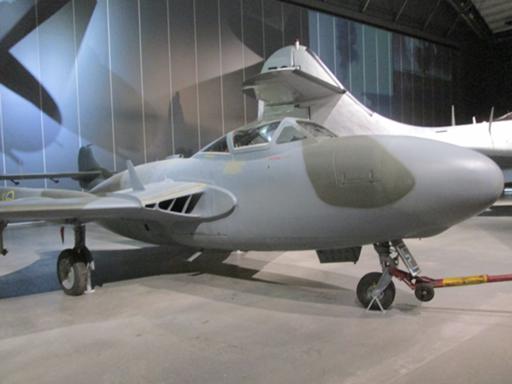
de Havilland Venom.

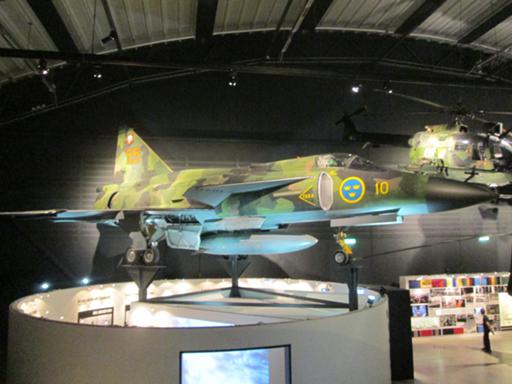
Saab Viggen (carefully placed to make it hard to get a good shot).
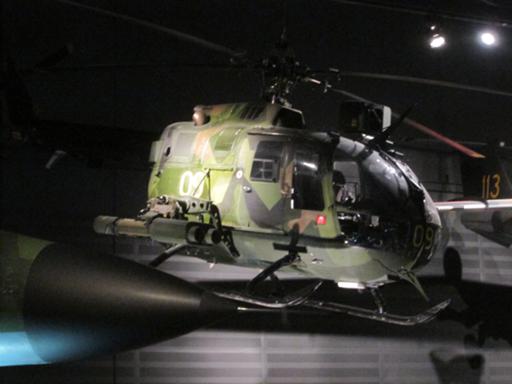
Messerschmitt-Bölkow-Blohm Bo 105, mostly a utility transport
helicopter, but (as seen here) capable of being armed.
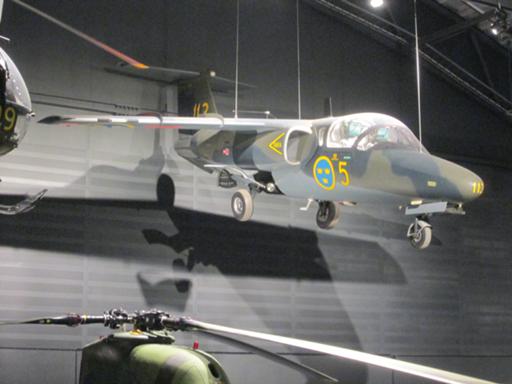
Saab 105 trainer, replacement for the Vampire.
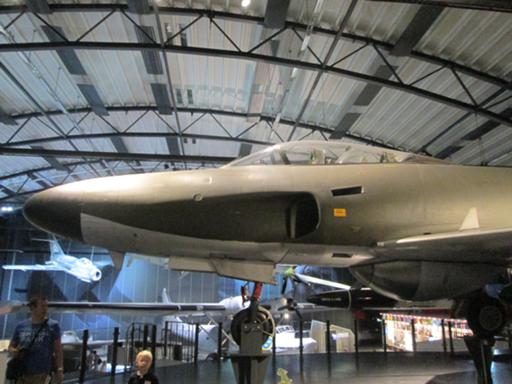
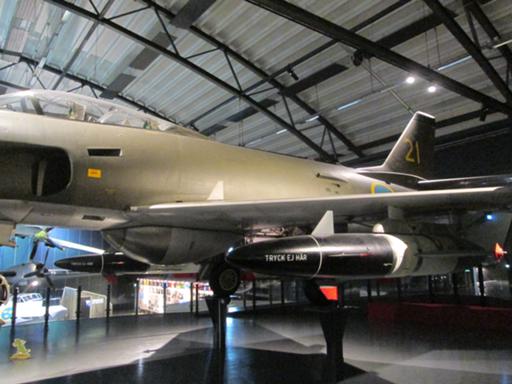

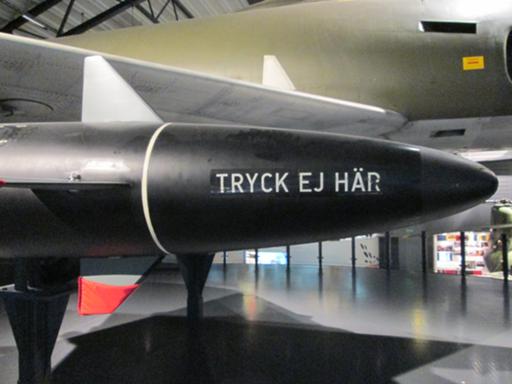

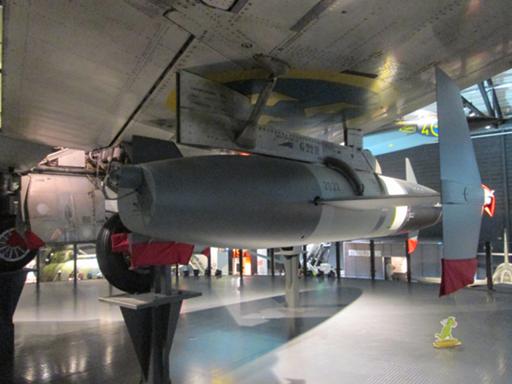
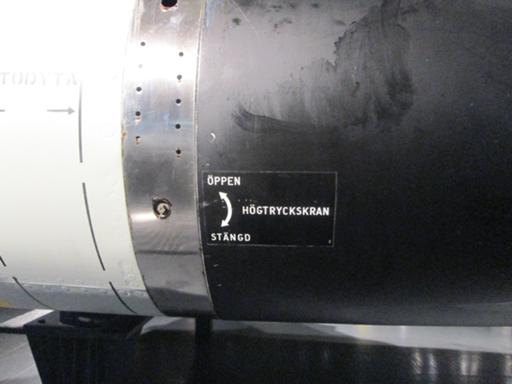
Saab Lansen, high-transsonic attack aircraft of the late 1950s. It's
not clear to me what those are under the wings; my default assumption
is that they're fuel tanks, but the big wing on the tail section and
the plug (or nozzle) at the back would suggest something else. In
service the Lansen carried the Sidewinder AAM or rocket pods, not big
missiles.

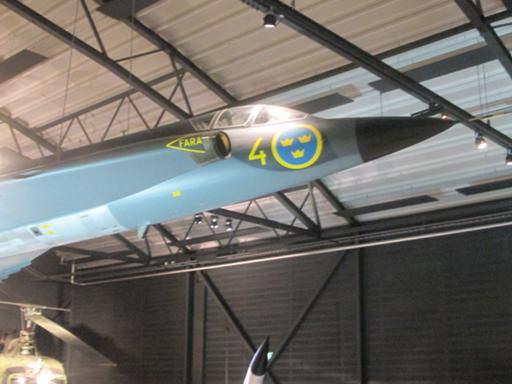
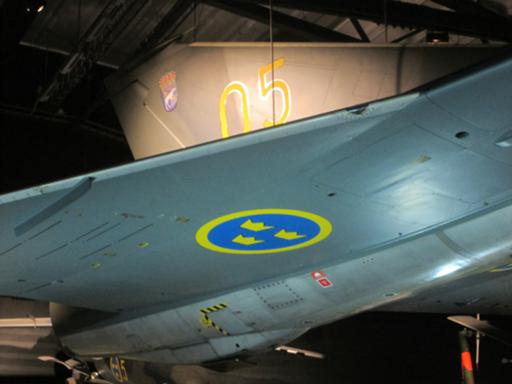
Saab Draken, one of my favourite aircraft designs. Also hard to
photograph because of its placement.
It's no Hendon, of course, but this is definitely one of the best
aviation museums I've been to. Something that I've noticed a lot here,
at the Husqvarna Museum, and at various Finnish military museums, is
that in the UK we're used to museums that are basically about
invention: "This was the world's first (X)". If the world's first X
wasn't British, it'll still be mentioned, but it'll be in the
background somewhere because there will have been some British
innovations and the museum will mostly be about them. But in Sweden
and Finland, and I imagine in most countries, what you get is "this
was the first (X) that was brought into Sweden", and then some years
later "this was the first (X) we produced for ourselves" (often split
into "the first one built here" and "the first one we actually
designed").
Comments on this post are now closed. If you have particular grounds for adding a late comment, comment on a more recent post quoting the URL of this one.